Yoga Poses For Preschoolers:
Yoga symbolizes union – a harmonious blend of knowledge, meditation, and physical well-being. This ancient practice, remarkably relevant even in modern times, is often hailed as one of the most holistic approaches to nurturing the health of the body and mind, while fostering self-awareness. Today, our focus shifts to a special group: yoga for preschoolers, and the yoga poses tailored for them.
Yoga’s benefits are well-documented and far-reaching. When adapted for preschool-aged children, it becomes a powerful tool not just for physical development but also for mental and emotional growth. These early experiences with yoga can lay a strong foundation for lifelong self-awareness and well-being.
Moreover, yoga for preschoolers extends beyond individual benefits. It cultivates a sense of responsibility and connection with others and the environment. Through yoga, young children learn and internalize universal values such as peace, non-violence, and respect for nature and others, creating a positive impact that resonates beyond the yoga mat.
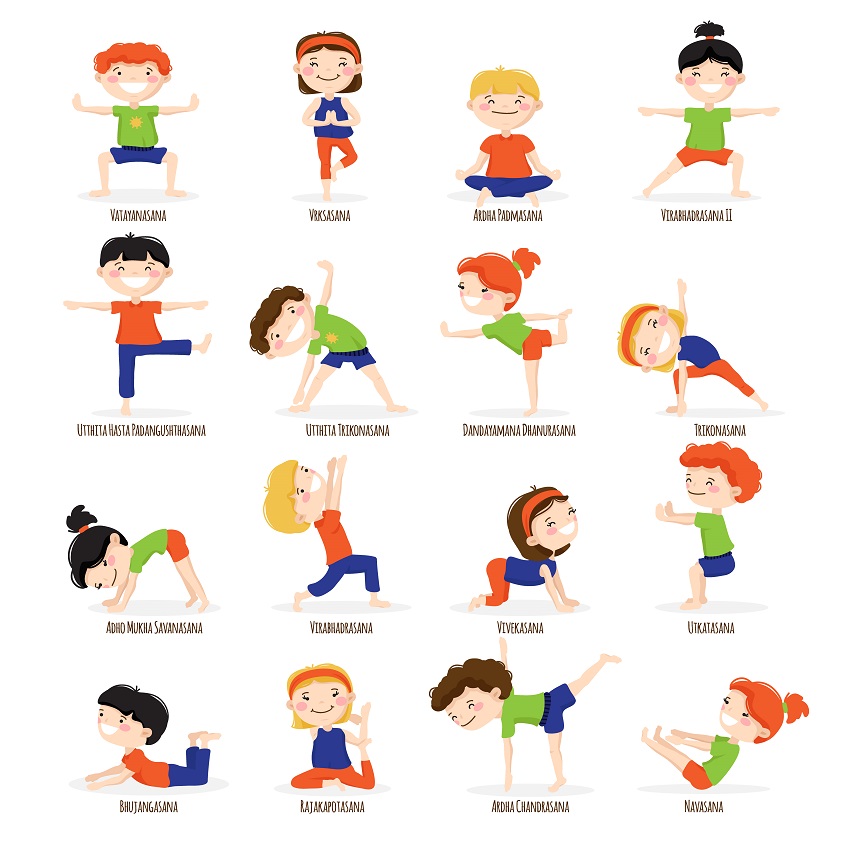
Physiological and Psychological Benefits of Yoga For Preschoolers:
Yoga for pre-kindergarten children plays a crucial role in their physical development, contributing to a strong and healthy body growth. Additionally, it aids in developing and maintaining a strong, flexible spine, which is vital for overall well-being. The harmonious extension of movements in yoga, even at a young age, ensures that muscles, tendons, and ligaments are kept well-conditioned and supple, supporting their physical health and agility from an early stage.
Specific breathing exercises have shown enormous benefits for both the body and mind. Breathing can set a tone throughout the day. Even for preschoolers it can help in emotion management, and reducing anxiety. By teaching slow breathing, children in a few months are able to practice it spontaneously.
At it’s most basic level, deep breathing helps better oxygenate the body. Moreover, helping nourish vital organs of the body, including the brain. In addition can help fight inflammation, that can lead to disease, according to a post published at Children’s Hospital Of Philadelphia.
Yoga for Pre-k is also suitable for problems related to emotionality, insomnia, stomach ache, psychosomatic disorders, even energy levels. Through relaxation techniques in terms of dreams and visualization of positive images, children are able to re-balance themselves physically and mentally.
With the yogic practice, children learn to relax the body and the mind. To appreciate the slowness and the pauses, listening to his/her inner world and to accept it.
When to start yoga for preschoolers?
The question of when to introduce yoga to preschoolers often depends on the individual child and their unique environment. Typically, starting around the ages of three or four can be suitable. For children who exhibit hyperactive tendencies, it may be beneficial to ease them gradually into yoga practices or to seek additional guidance tailored to their needs.
It’s important to recognize that some children may not be immediately ready for group yoga sessions. Instead of suppressing their emotions, these children require a thoughtful approach to channel their energy and activity. Addressing these needs effectively often goes beyond the scope of a single post.
In preschool yoga, the practice is usually presented as a playful, engaging activity. Through this approach, children learn to become aware of themselves, develop self-control, and release tensions in a fun and nurturing environment.
Yoga Poses For Preschoolers:
In the world of yoga, there is a wealth of poses, or asanas, to explore. Among these, certain favorites stand out, especially for preschoolers. Some of these poses are very simple, perfect for beginners, while others are slightly more complex, suitable for children who have had a bit more practice.
It’s crucial to remember that yoga for children differs significantly from adult yoga. For young children, yoga should be approached as a playful activity, a time for leisure and fun. This approach helps promote relaxation and self-discovery in a way that is engaging and enjoyable for them.
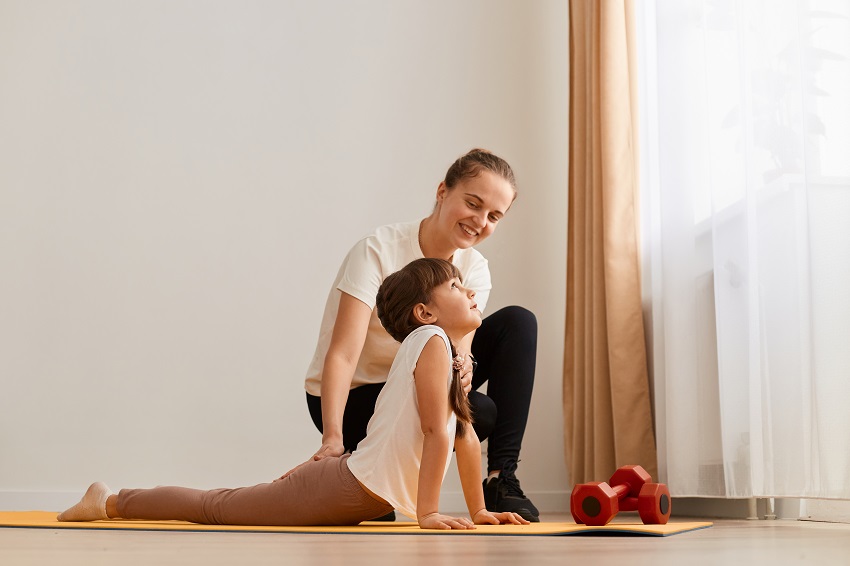
Steps:
- Beginning on the belly.
- Toes pointed towards the back and shoulders underneath the hands.
- Keep the elbows tight toward the body.
- Then, inhale and lift the chest off the mat.
- Extend your arms, engaging the core and the lower back muscles to lift.
- Gaze can be upward or towards the front of your position.
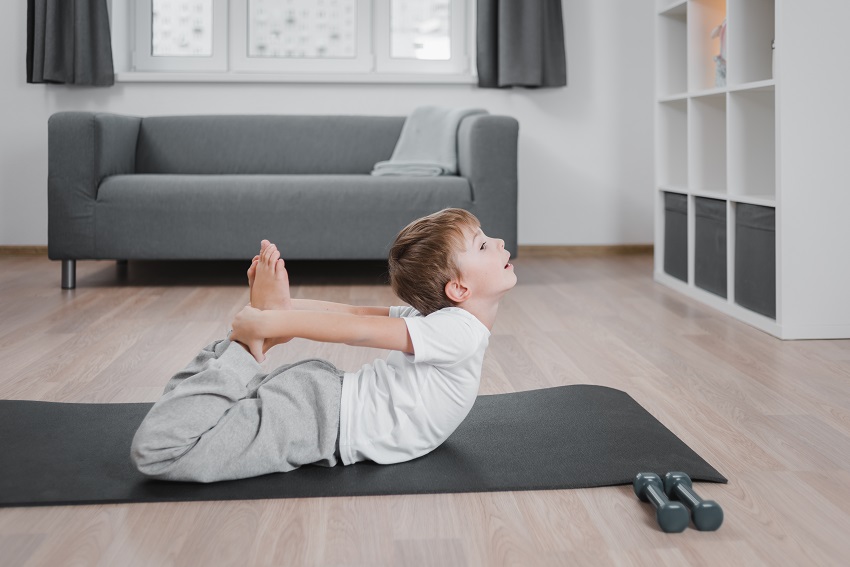
Steps:
- Begin on your belly.
- Grab your ankles by bending your knees.
- Then, slowly lift off the ground keeping your feet away from your head.
This position stimulates the abdominal organs and reduces stress.
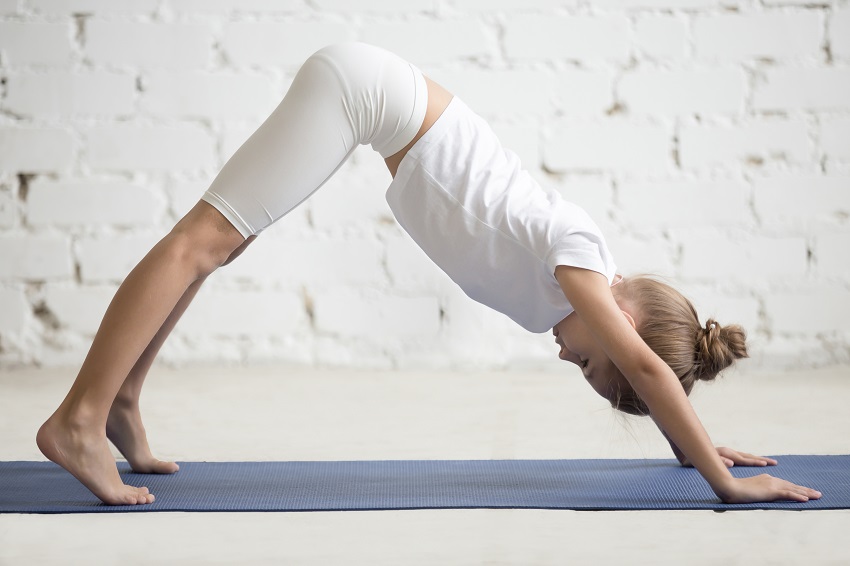
Steps:
- Begin on all fours. Curl your toes under. Fingers spread wide-out in front to the top of the mat, resting on your forearms.
- Then, begin to bring the forearms off the mat, then the knees, while lifting the hips/buttocks toward the ceiling. Engage the core.
- Once up, spread the palms further, pedaling the feet to stretch the calves slightly.
- Rotate the shoulders away from the body.
- Relax the head and neck, bringing the heart towards the thighs.
Tree Pose:
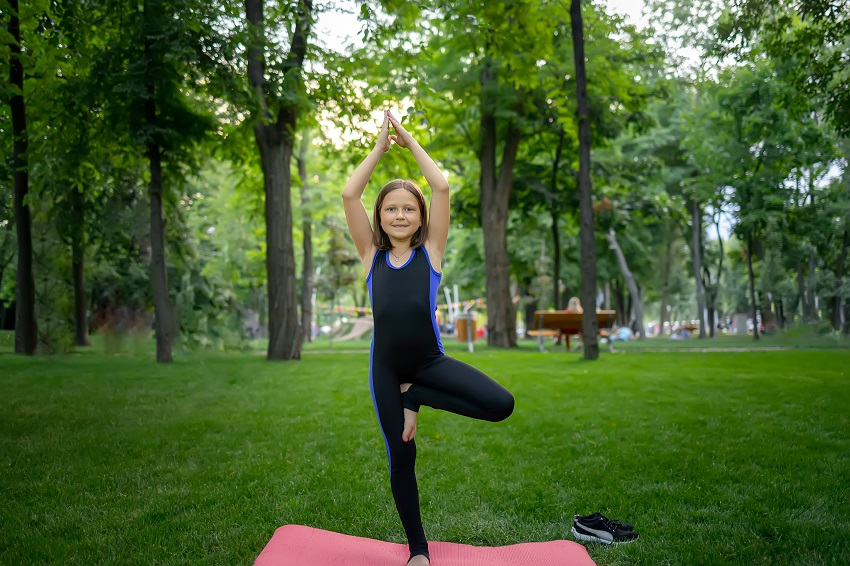
Steps:
- Begin standing on the mat, feet together.
- Lift one leg slightly at the knee and experience balance.
- Place the leg lifted towards the inner thigh of the stabilizing leg. Rest the sole of the foot on that thigh.
- Then, bring your hands together in a prayer position.
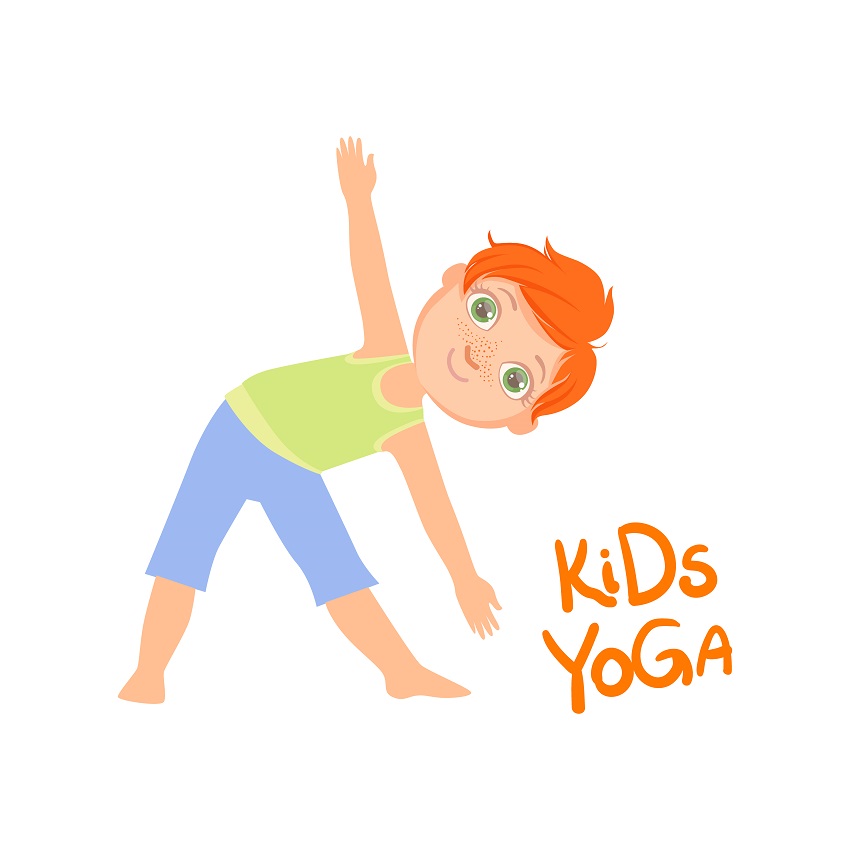
Also known as Trikonasana, it resembles the shape of large, golden pyramids.
Steps:
- Step the feet wide and raise the arms parallel to the floor. Wrists over ankles.
- Rotate the palms up toward the ceiling.
- Take a few deep breaths.
- Turn the right toes out 90 degrees toward the front of the mat. Left hip/toes turn in slightly.
- Inhale, reach forward, sending the buttock toward the back of the mat.
- Slowly descend and reach the right hand downward toward the shin.
Cow pose:
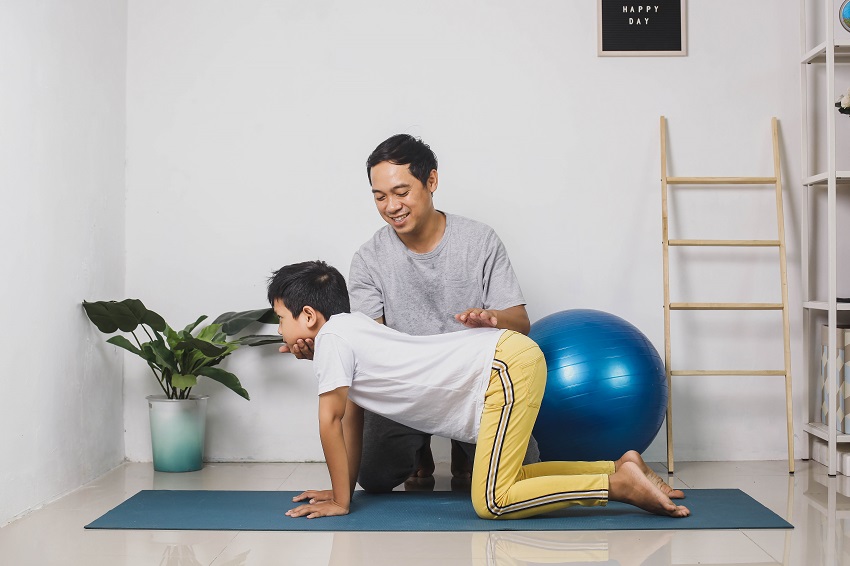
Steps:
- Begin on all fours.
- Shoulders over wrists, hips over knees. Then, draw the shoulders away from the ears.
- Inhale while tilting the pelvis downward, navel toward the floor. Simultaneously, lifting the chest-up.
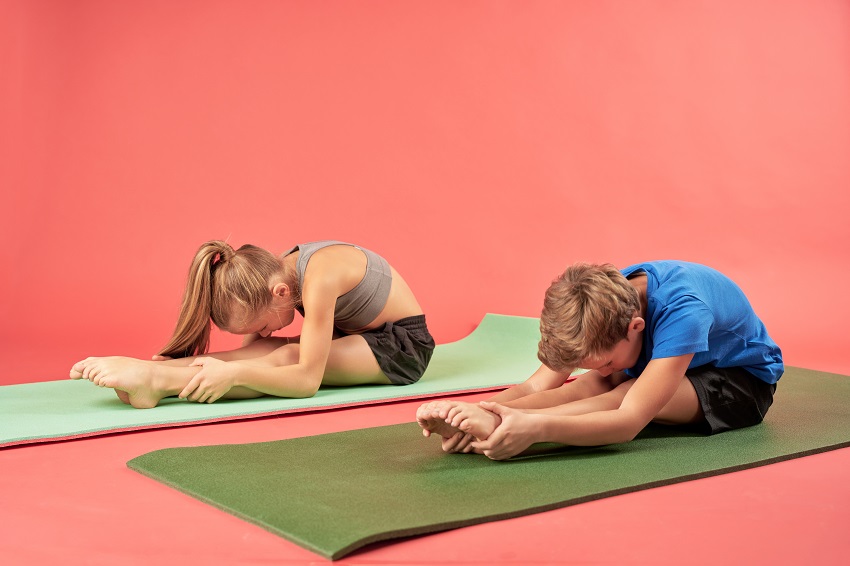
Steps:
- Sit with the legs extended forward.
- Then, sit starlight-up or slightly forward with a pelvic tilt.
- Engage the core, lengthen the lower back as we reach toward the toes.
Final Thoughts!
Yoga is a fantastic practice to begin in early childhood. The importance of keeping things fun cannot be said enough. For example, using yoga as sort of a game works best at this age. You may be surprised as to which kids have actually tried it before. You may be surprised how much fun and engaged they become in the practice.
References:
- https://www.parentcircle.com/simple-breathing-exercises-pranayama-for-kids/article
- https://www.chop.edu/news/health-tip/power-yoga-breathing-children




